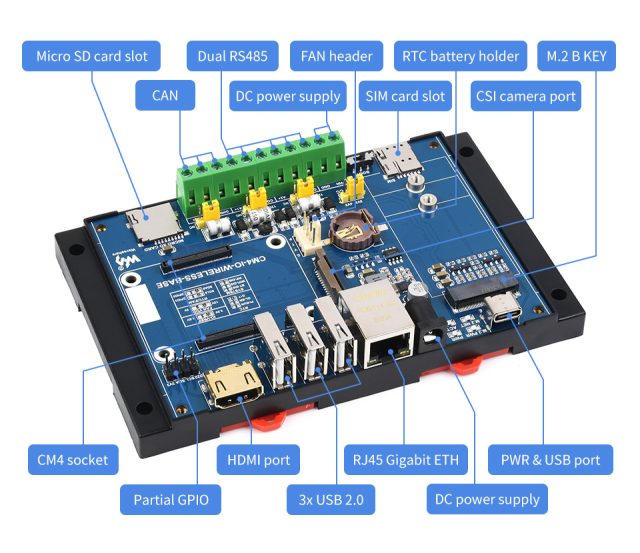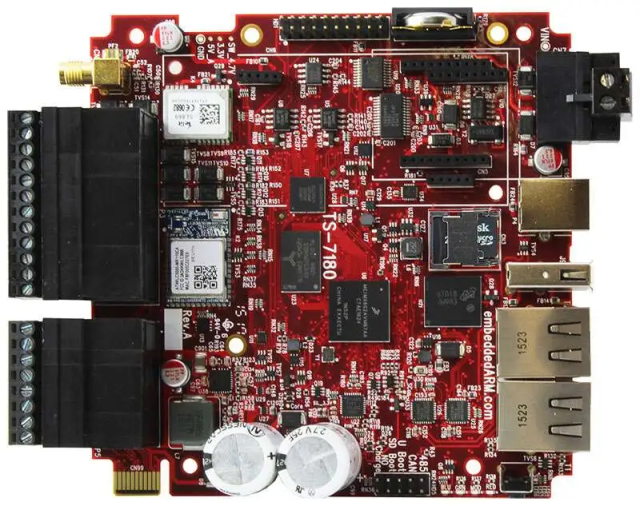Engineering Context — RF-35 PCB for Next-Generation Industrial mmWave Networks
Industrial IoT communication is rapidly shifting toward 28 GHz to 60 GHz mmWave domains, demanding high-power amplifier (HPA) modules that deliver low-loss signal routing, stable gain, and robust thermal reliability.
At these frequencies, the choice of PCB substrate directly determines the performance envelope of the RF front-end chain.
The RF-35 PCB, a Taconic PTFE glass-reinforced dielectric (Dk = 3.5 ±0.05, Df = 0.0018 @10 GHz), provides the ideal dielectric and mechanical balance for mmWave HPA packaging.
Its low dissipation factor ensures minimal insertion loss, while its uniform dielectric constant supports precise impedance matching between amplifier stages.
However, when RF-35 substrates are combined with high-power GaN die attach zones, thermal expansion mismatch and microvia fatigue can cause gain drift or phase nonlinearity.
KKPCB’s advanced Hybrid RF Packaging and Validation Framework addresses these exact issues — ensuring repeatable high-frequency performance in Industrial IoT mmWave amplifier systems.

Key Challenges in RF-35 PCB High-Power Amplifier Design
| Challenge | Engineering Cause | Impact on mmWave Link |
|---|---|---|
| Thermal cycling fatigue | Power dissipation up to 8 W/cm² | Solder joint cracking, impedance shift |
| CTE mismatch between Cu and PTFE | Cu: 17 ppm/°C vs PTFE: 12 ppm/°C | Microcrack propagation under temperature stress |
| Localized heat concentration | GaN FET thermal hotspots | Nonlinear gain & phase instability |
| RF leakage in via transitions | Poor via metallization or resin voids | Increased signal reflection (S11 degradation) |
KKPCB’s RF-35 PCB platform integrates thermal equalization design, via reliability modeling, and multi-layer impedance calibration to ensure continuous performance under thermal and RF stress.
KKPCB’s RF-35 High-Power Amplifier Packaging Methodology
1. Thermal-Mechanical Simulation
-
FEM simulation across 25°C–150°C to model CTE gradients and copper stress concentration zones
-
Optimized dielectric stack symmetry reduces warpage to <0.1 mm
-
Predicted ΔR_th (thermal resistance) variation <3% over temperature sweep
2. Microvia and Plated-Through-Hole (PTH) Reliability
-
Sequential lamination ensures via alignment tolerance <25 µm
-
PTH copper plating thickness: 25 µm ± 5 µm, validated for 1500 thermal cycles
-
Microvia reliability tested under IPC-TM-650 2.6.27 (HATS) thermal stress profiles
3. High-Power RF Impedance Calibration
-
77 GHz TDR impedance verification with ±5% tolerance
-
RF transition areas reinforced using low-roughness rolled copper (Ra < 0.8 µm)
-
Cross-layer impedance matched to amplifier output trace via adaptive etch compensation
4. Hermetic Packaging Integration
-
Compatible with aluminum-nitride (AlN) carrier substrates
-
Low-CTE adhesive systems (<50 ppm/°C) minimize expansion differential
-
Achieved leak rate <1×10⁻⁸ atm·cc/sec under MIL-STD-883 method 1014

RF-35 PCB
Case Study — 60 GHz GaN Power Amplifier in Industrial IoT Gateway
Client: German IIoT gateway equipment manufacturer
Application: mmWave data backhaul and industrial wireless node
Design Objective:
Develop a 3-stage GaN amplifier on RF-35 PCB with 28 dB gain, 30 dBm output power, and <0.5 dB gain variation over temperature.
| Parameter | Specification | KKPCB Result |
|---|---|---|
| Frequency Range | 57–66 GHz | 57–66 GHz |
| Gain | 28 ± 1 dB | 28.3 dB |
| Output Power (Pout) | 30 dBm | 30.6 dBm |
| Return Loss (S11) | < –12 dB | –14.2 dB |
| ΔGain (–40°C to +125°C) | < 0.5 dB | 0.32 dB |
| Thermal Resistance | < 10 °C/W | 9.3 °C/W |
The design employed RF-35 for signal layers and FR-408 HR for mechanical reinforcement, forming a 6-layer hybrid stackup.
KKPCB’s thermal balancing lamination minimized expansion differential, preventing die-attach misalignment and impedance drift under repeated power cycles.
Over 1500 power-on/off cycles, the module maintained phase variation <0.2°, demonstrating RF-35’s long-term mmWave reliability.
Reliability Validation — Industrial IoT Environmental Profiles
| Test Condition | Duration | Result |
|---|---|---|
| Thermal Shock | –55°C to +150°C, 1000 cycles | No delamination |
| Power Cycling | 10⁶ on/off cycles @ 60 GHz | Stable gain, <0.3 dB drift |
| Vibration | 10–2000 Hz / 10 G RMS | No via cracking |
| 85°C/85% RH | 1000 hours | Df drift < 0.0002 |
| High-Temp Storage | +150°C / 1000 h | No dielectric degradation |
All validation confirmed RF-35 PCB substrates maintain dielectric stability and thermal adhesion integrity, even under continuous RF power exposure typical in industrial gateways, smart factories, and autonomous robotics links.
Material Comparison — RF-35 vs. RO3003 for High-Power Applications
| Property | RF-35 | RO3003 |
|---|---|---|
| Dk @ 10 GHz | 3.5 ± 0.05 | 3.0 ± 0.04 |
| Df @ 10 GHz | 0.0018 | 0.0010 |
| Thermal Conductivity | 0.27 W/m·K | 0.50 W/m·K |
| CTE (Z-axis) | 28 ppm/°C | 24 ppm/°C |
| Hybrid Lamination | Excellent | Moderate |
| Cost Efficiency | Higher | Lower |
While RO3003 provides slightly lower Df, RF-35 PCB offers better adhesion, hybrid compatibility, and manufacturability, making it the preferred platform for high-volume industrial amplifier packaging where thermal control and yield consistency dominate design priorities.
Conclusion — Reliable RF-35 PCB Integration for mmWave IoT Amplifiers
RF-35 PCBs form the foundation of industrial-grade mmWave amplifier packaging, enabling both RF precision and mechanical durability under high power and temperature gradients.
KKPCB’s validated hybrid stackup, thermal management, and impedance control system deliver:
- Stable gain and phase consistency
- Long-term solder and via reliability
- Optimized thermal balance for GaN power integration
- Proven performance under industrial environmental profiles
From smart factory gateways to autonomous robotic mmWave backhaul links, KKPCB’s RF-35 PCB technology ensures the next generation of Industrial IoT RF power modules achieve uncompromised signal integrity and reliability.

